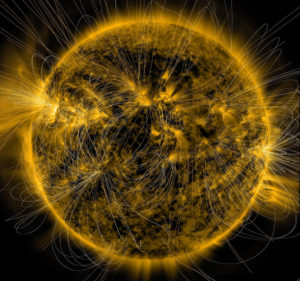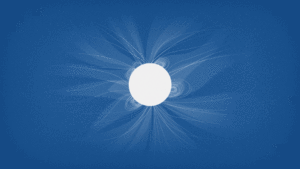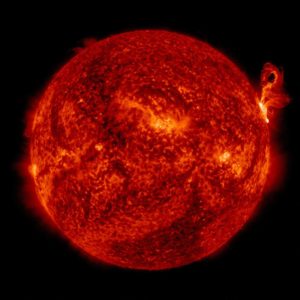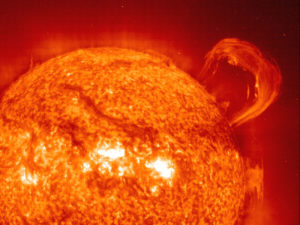Welcome!
The Cool Stars Group is an astrophysics research group lead by Prof. Moira Jardine and based at the University of St Andrews. We are a subset of the Astronomy Group and our research focusses mainly on low mass stars.
Research within the group typically focuses around;
- Stellar magnetic fields
- Stellar winds
- Stellar prominences
Specifically on “young suns” or stars that are similar to the Sun in it’s youth.
Stellar Magnetic Fields:
The magnetic field of the Sun is now widely researched, but in order to uncover what it could have been like in its youth we must look to other stars for inspiration. These young low mass stars are typically fast rotators and have a stronger, more active magnetic field than our Sun. This results in more radio and X-ray emission, larger stellar flares and a more active corona. This section of stellar evolution, before the star has spun down to rotation speeds similar to our Sun, corresponds to a time of planet formation. Thus, investigating the magnetic field evolution of such stars could provide us with insight into the development of our own Solar System.

We model the generation of stellar magnetic fields, deep within the interior of these stars, as well as the structure that these fields take once they emerge into the corona. Observational data from Zeeman-Doppler imaging of low mass stars can provide us with maps of the magnetic field at the stellar surface. From these maps, we can extrapolate the magnetic field up into the stellar corona.
Stellar Winds:

From a determined coronal magnetic field structure, the field lines that are open correspond to the places in which the stellar wind may escape.
Stellar Prominences:
Prominences are condensations of coronal plasma that are trapped by stellar magnetic field. On the Sun, they make for plenty of beautiful photographs;


On stars other than the Sun, such images can not be taken. Instead we infer their presence from changes in intensity of light (specifically the H-alpha line) that occur when the prominence passes in front of the star. Prominences on young suns seem to be significantly larger than solar prominences (with masses 10-100 times larger) and are also supported at significantly larger distances from the surface. This is due to the difference in the magnetic field between young suns and older stars like the Sun. The formation and support process of these features on young suns must therefore be different to on the Sun. It is this that we investigate.
By investigating these aspects of the stellar magnetic fields, we hope to discover more about the evolution of low mass stars in their early stages of life.